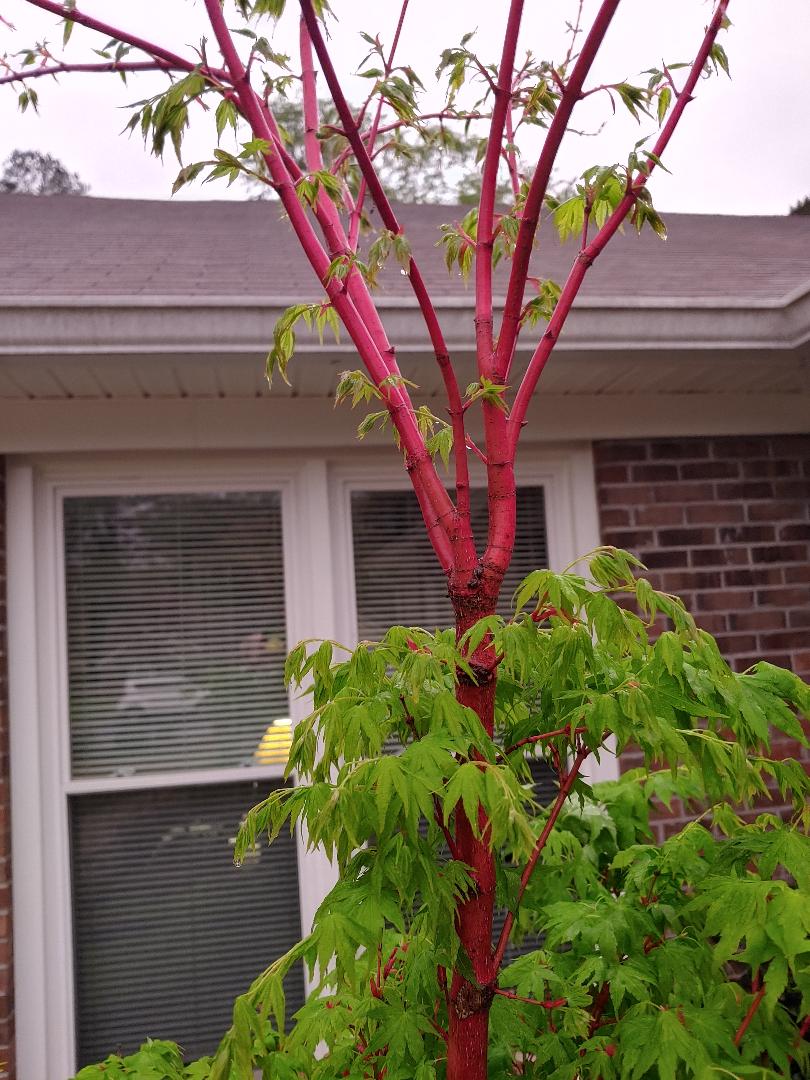

Any recommended fertilization should use a balanced complete fertilizer for shrubs and trees. If your other lawn and garden plants do well, your Japanese Maple should grow just fine. Fertilizing: Japanese Maples do not require large amounts of nutrients. If you're not sure when to water, simply check the surrounding soil for dryness.ģ. During the hot summer months, water your Japanese Maple in early morning or evening. Watering: The typical amount of water supplied to the most common lawn and garden plants should be adequate for your new Japanese Maple Tree. Water the planting site and then mulch to preserve soil moisture.Ģ. Fill the hole and tamp down the soil as you proceed to cut back on any air pockets from forming. The root collar of the tree, the ground line on the stem where the young plant was grown, should be level with the ground surface. When planting, the hole should be dug slightly larger than the root system of the plant, 2 to 3 times the width and just as deep as the root ball. Keep in mind that your tree should be shielded from the harsh afternoon sun, especially if you live in a hotter climate. Planting: First, ensure you select an area with well-drained soil and the proper sunlight requirements for your Coral Bark. You'll receive a healthy tree that has performed perfectly at our nursery and is ready to excel in your yard or container. Harsh summer temperatures don't faze this amazing tree.Īnd we groom it to perfection, with all of its roots intact, so that it arrives healthy and ready to thrive. This Coral Bark Japanese Maple is heat and drought tolerant. It finally takes on autumn-like hues of fiery red, bright yellow and rusty orange in late summer into early fall.īest of all, it's easy to own. Green leaves emerge in the spring and have reddish-pink tinges of color at the tips of them.Īs the seasons progress, the leaves transform into a medium green color, that deepens to an almost neon green for the summer season. While the red bark makes a statement in the winter, the foliage steals the show throughout spring, summer, and fall. Plus, foliage color changes leave an eye-catching impression. It grows upright and while it's on the larger scale compared to most Maples, it is compact and ideal for small yards.and even patios.

Bright red bark adds a spark of personality throughout the winter months. Synonymous with and formerly sold as ‘Senkaki’.Intense red color, even in the winter - the Coral Bark Japanese Maple Tree makes the ultimate statement. Cultivar name means coral tower ( sango meaning sea coral and kaku meaning tower/upward growing) as if to suggest this pink-barked cultivar resembles coral rising upward from a reef. Flowers are followed by samaras that ripen in late summer to fall. Small reddish-purple flowers in spring are somewhat attractive on close inspection, but are not showy from a distance. Palmate, 5- to 7-lobed, almost ferny leaves (to 2” long) with serrate margins emerge yellow-green with reddish margins in spring, mature to light green by summer and turn yellow-gold in fall. Best pink coloration occurs on young twigs and branches. Pink coloration is less pronounced to almost absent in summer. It is sometimes commonly called coral bark maple in reference to its distinctive and showy pink bark which provides excellent color and contrast to landscapes in winter. ‘Sango-kaku’ is an upright, slow-growing, vase-shaped form that typically grows over time to as much as 20-25’ tall. Each leaf has several lobes (typically 5–7) that all originate from one point looking like an open hand with outstretched fingers. Specific epithet is in reference to the palmate nature of the leaves. Genus name is the Latin name for a maple tree. Cultivars (often grafted) are quite variable. Fall color includes shades of yellow, red-purple and bronze. Flowers are followed by samaras (to 3/4" long) in pairs. The flowers are rather attractive close up, but are not particularly showy from a distance. Small reddish-purple flowers in umbels bloom in mid spring (April). Each palmate green leaf (2-5" long) has 5 or 7 but less frequently 9 pointed toothed lobes. General plant form is rounded to broad-rounded, often with low branching. Acer palmatum, commonly called Japanese maple, is a deciduous shrub or small tree that typically grows to 10-25' (infrequently to 40') tall.


 0 kommentar(er)
0 kommentar(er)
